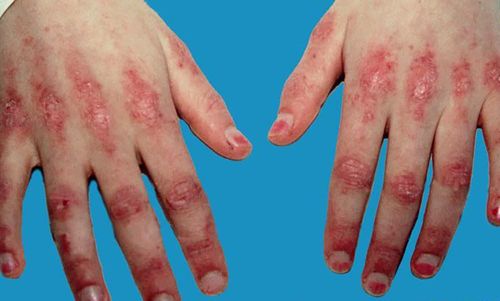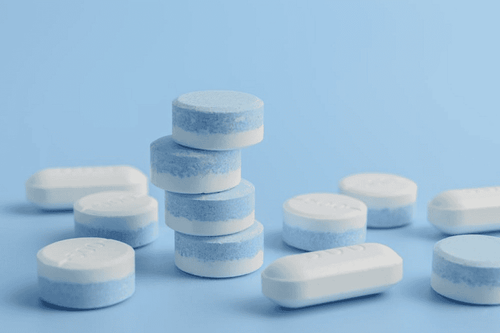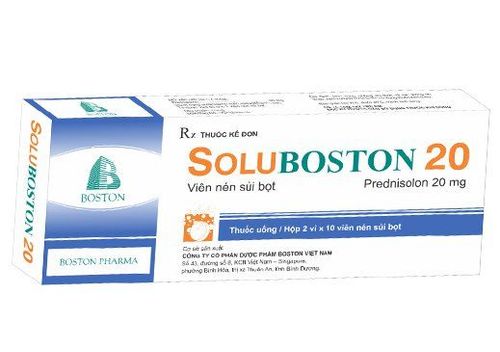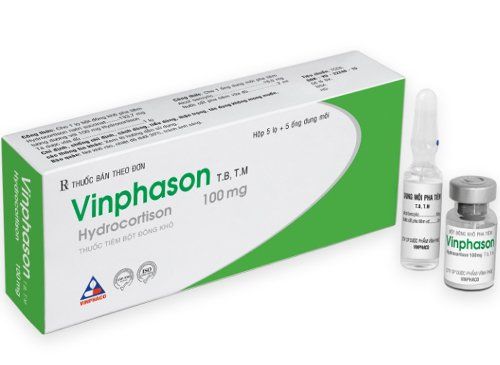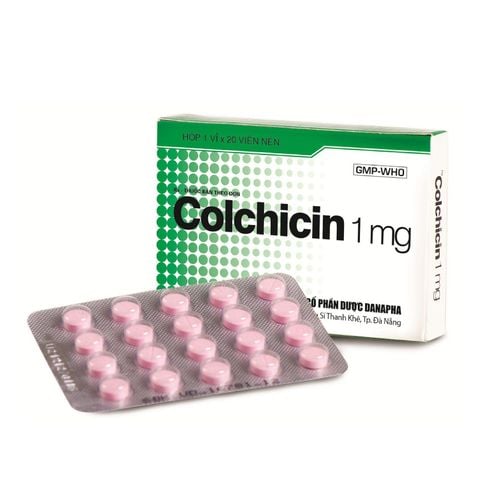This is an automatically translated article.
Posted by MSc Nguyen Minh Tuan - Pediatrician, Department of Pediatrics - Neonatology - Vinmec Da Nang International General HospitalIdiopathic juvenile arthritis according to ILAR (International Association of Rheumatology) is a group of chronic arthritis with onset of disease more than 6 weeks in children under 16 years of age. Clinical manifestations are heterogeneous including: oligoarthritis; RF polyarticular (+); RF polyarticular (-); system body; psoriatic arthritis; tendonitis may; Arthritis unclassified. Polyarticular juvenile idiopathic arthritis accounts for one-third of this group of diseases.
1. Causes of Idiopathic Juvenile Arthritis
The cause of juvenile idiopathic arthritis is still unknown. The disease is not caused by a single cause, but by many joint-directed factors that act together in an individual carrying certain genetic factors. Environmental factors, especially infectious agents; Immune system disorders ... have an important role in the pathogenesis of idiopathic juvenile arthritis .2. Diagnosis
2.1 Definitive diagnosis
Diagnostic criteria for polyarticular idiopathic juvenile arthritis RF (+) according to the International Association of Rheumatology (ILAR - 2001) + Polyarthritis: inflammation of ≥ 5 joints, manifested in first 6 months of disease onset. + RF (+): at least 2 samples (+) with a 3-month interval, within the first 6 months of the survey. + Age: onset < 16 years + Duration of arthritis lasting at least 6 weeks + Immune markers similar to adult rheumatoid arthritis (HLA-DR4) Polyarticular juvenile idiopathic arthritis RF (+) ) accounts for 5% of this group of chronic joint diseases. The disease is more common in girls than boys (female: male = 5.7 - 12.8: 1), late onset age 9 - 13 years old. RF frequency (+) increases with age, the presence of RF has prognostic value for advanced disease activity.
Multi-joint lesions, both large and small, symmetrical. Joint damage is often severe with early bone loss, impaired joint mobility, and a higher likelihood of needing a joint replacement later in life. Common extra-articular lesions such as myocarditis, pericarditis, pleural effusion, vasculitis, systemic connective tissue inflammation, Felty syndrome, carpal tunnel syndrome. .. Uveitis and other eye injuries are uncommon. Rheumatoid nodules (low nodules under the skin) are found in 10%.
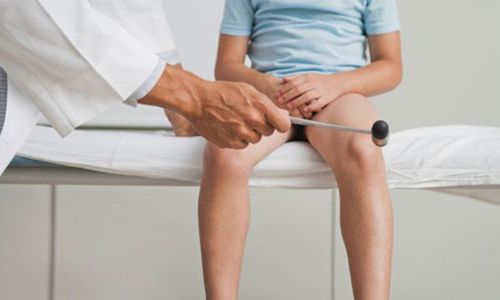
Nguyên nhân của bệnh viêm khớp thiếu niên tự phát cho đến nay vẫn còn chưa rõ
2.2 Diagnostic criteria for polyarticular juvenile idiopathic arthritis RF(-) ILAR + Polyarthritis: inflammation of ≥ 5 joints, within the first 6 months of disease onset with RF(-) + This clinical form has 3 subtypes group:
Polyarthritis with ANA (+): early onset (< 6 years old); mainly seen in girls; high risk of anterior uveitis ; asymmetric arthritis, large and small joints. Prolific symmetric synovitis: late onset (7-9 years old); Symmetrical arthritis, less uveitis complications. Dry bursitis: late onset (≥ 7 years of age); poor response to therapy.
RF (-) polyarticular idiopathic juvenile arthritis has an early age of onset (50% before 5 years of age). The disease is more common in girls than boys in the ratio (3:1). HLA-DRw8 (DRB1*0801) is associated with RF (-) polyarticular idiopathic juvenile arthritis and mono- or multi-joint type. The disease is usually insidious, but can also have an acute onset. The child's general condition is less affected, usually no fever or only mild fever. Injuries to large and small joints, which may be symmetric or non-symmetrical, usually progress slowly. Hip injuries often appear late. Wrist and ankle bursitis and hand flexor tendonitis are common. Extra-articular lesions are uncommon.
2.3 Differential Diagnosis The basis of a definitive diagnosis of juvenile idiopathic arthritis is a diagnosis of exclusion. For polyarthritis with severe disease activity, it is necessary to exclude: severe infection; CINCA (Chronic infantile neurological cutaneous and articular syndrome - Chronic neurological subcutaneous and joint syndrome in children); other connective tissue diseases (systemic lupus erythematosus, dermatomyositis, polymyositis, vasculitis...); malignancy ; skeletal dysplasia; Agammaglobulinaemia; rheumatic bowel disease.

Điều cơ bản khi chẩn đoán xác định viêm khớp thiếu niên tự phát là chẩn đoán loại trừ
3. Treatment
3.1 Idiopathic Juvenile Arthritis RF (+) Start with one of the approved non-steroidal anti-inflammatory drugs (NSAIDs) for use in children: Aspirin (75-100mg/kg/24h); Ibuprofen (30-50mg/kg/24h); Naproxen (15-20mg/kg/24h); Tolmetin (30-40mg/kg/24h). In case of severe disease progression, poor response to non-steroidal anti-inflammatory drugs, it is necessary to replace with corticosteroids: Methylprednisolone 10-30mg/kg/24h, intravenous infusion for 1-3 days; or Prednisone in high dose 2-3mg/kg/24h. Corticosteroids are rapidly tapered over 1-2 weeks and maintained at a low effective dose of oral prednisone of 0.5-1mg/kg/24h. Intra-articular corticosteroids can help improve inflammatory joint function and local pain symptoms. In combination with early primary therapy (DMARDs), methotrexate (MTX) is the drug of first choice at a dose of 10 mg/m2 orally once a week. Methotrexate dose may be increased to 0.5 mg/kg/week. If arthritis persists for > 6 months and does not respond to oral administration, methotrexate can be switched to subcutaneous injection at a dose of 1 mg/kg/week (optimizing dose of MTX). Add a second line of primary therapy (DMARDs), indicated when methotrexate is not effective: Hydroxychloroquine (5-6mg/kg/24h) can be used for older children (>4 years), or Sulfasalazine (>4 years old) 25-50 mg/kg/24h), for young children can be started at 12.5mg/kg/24h. For treatment-resistant or steroid-dependent cases: Biologic therapy is indicated.
IL 6 receptor antagonist Tocilizumab (Actemra), dose of 8-10 mg/kg IV every 2-4 weeks or anti-TNF α Etanercept dose of 0.4mg/kg subcutaneously twice a week, used as a single dose toxic or can be combined with methotrexate. Once remission is achieved, the combination drugs are kept at steady doses for several months. The corticosteroids are then reduced in dose and discontinued first. Nonsteroidal anti-inflammatory drugs (NSAIDs) and primary therapy (DMARDs) are continued during remission (at least > 1 year). Non-steroidal anti-inflammatory drugs (NSAIDs) were discontinued first and DMARDs discontinued later, when remission was assessed to be truly stable. In the event of a relapse, the medications used at the time the child achieved remission will be reintroduced. 3.2 Idiopathic Juvenile Arthritis RF (-) Start with Non-Steroidal Anti-Inflammatory Drugs (NSAIDs) Add Basic Drugs (DMARDs): If After 1-2 Months Arthritis Doesn't Improve, Sulfasalazine is the drug of first choice because of its earliest duration of action among DMARDs. For older children with moderate disease activity, hydroxychloroquine can be used alone or in combination with sulfasalazine. If > 6 months of disease progression, methotrexate is the drug of choice instead. Low-dose corticosteroids (prednisone 0.5 mg/kg/24 hours) help improve joint mobility. Intra-articular corticosteroids may be considered in combination if arthritic symptoms are poorly responsive to oral anti-inflammatory agents. When remission is achieved, NSAIDs should be maintained for at least 6 months before discontinuing and DMARDs should be continued for approximately 1 year from the onset of clinical remission. The DMARDs are then discontinued if there are no signs of recurrence. Recurrence: drugs used at the time the child achieves remission will be used again.
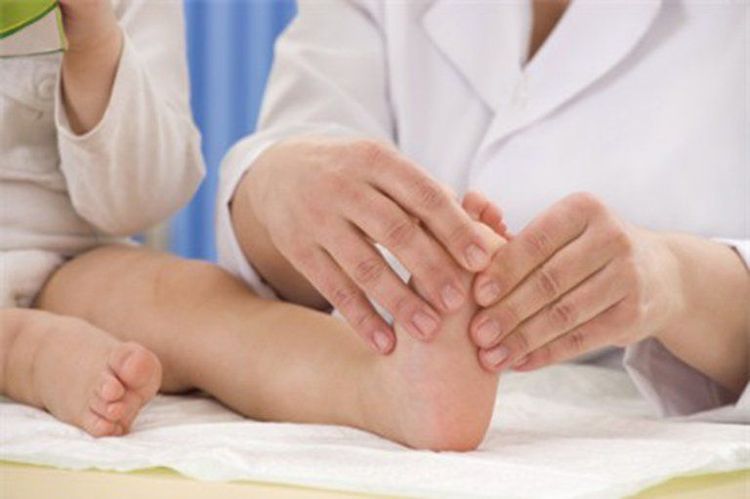
Điều trị viêm khớp thiếu niên tự phát đúng thời điểm
4. Monitoring and management
Pediatric patients are monitored and re-examined at the pediatric rheumatology department every month for many years, paying close attention to monitoring and adjusting psychophysiological changes in children. Evaluate the improvement of joint mobility and disease activity during treatment to adjust therapy to suit progression of the disease. Monitor drug side effects. This is a possible risk during treatment. Therefore, children need to be monitored and re-examined periodically. Laboratory tests should be performed periodically: + Peripheral blood cells, erythrocyte sedimentation rate / every 2 to 4 weeks during the induction phase, every month during the maintenance phase, and every 3 months when remission is achieved . + Plasma protein electrophoresis every month during the induction phase and then every 3 months. + Liver and kidney function, blood clotting every month for the first 3 months when starting the combination of DMARDs, then every 3 months. + Other tests (myelogram, echocardiogram, chest X-ray...), are indicated when there is unfavorable progression of the disease, suspecting serious complications such as macrophage activation syndrome, degeneration amyloidosis, heart inflammation, pulmonary fibrosis, renal papillary necrosis, osteoporosis or aseptic necrosis of the femoral head ...
Vinmec International General Hospital is one of the hospitals that not only ensures professional quality. with a team of leading medical doctors, a system of modern equipment and technology, but also outstanding with comprehensive and professional medical examination, consultation and treatment services; civilized, polite, safe and sterile medical examination and treatment space.
Customers can directly go to Vinmec Health system nationwide to visit or contact the hotline here for support.
SEE ALSO:
Learn about systemic idiopathic juvenile arthritis Causes and symptoms of polyarthritis Polyarthritis treatment and pain relief






